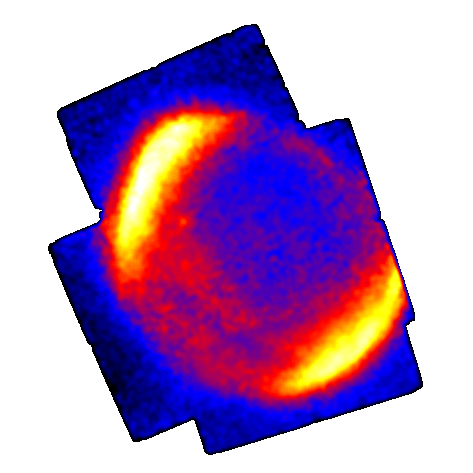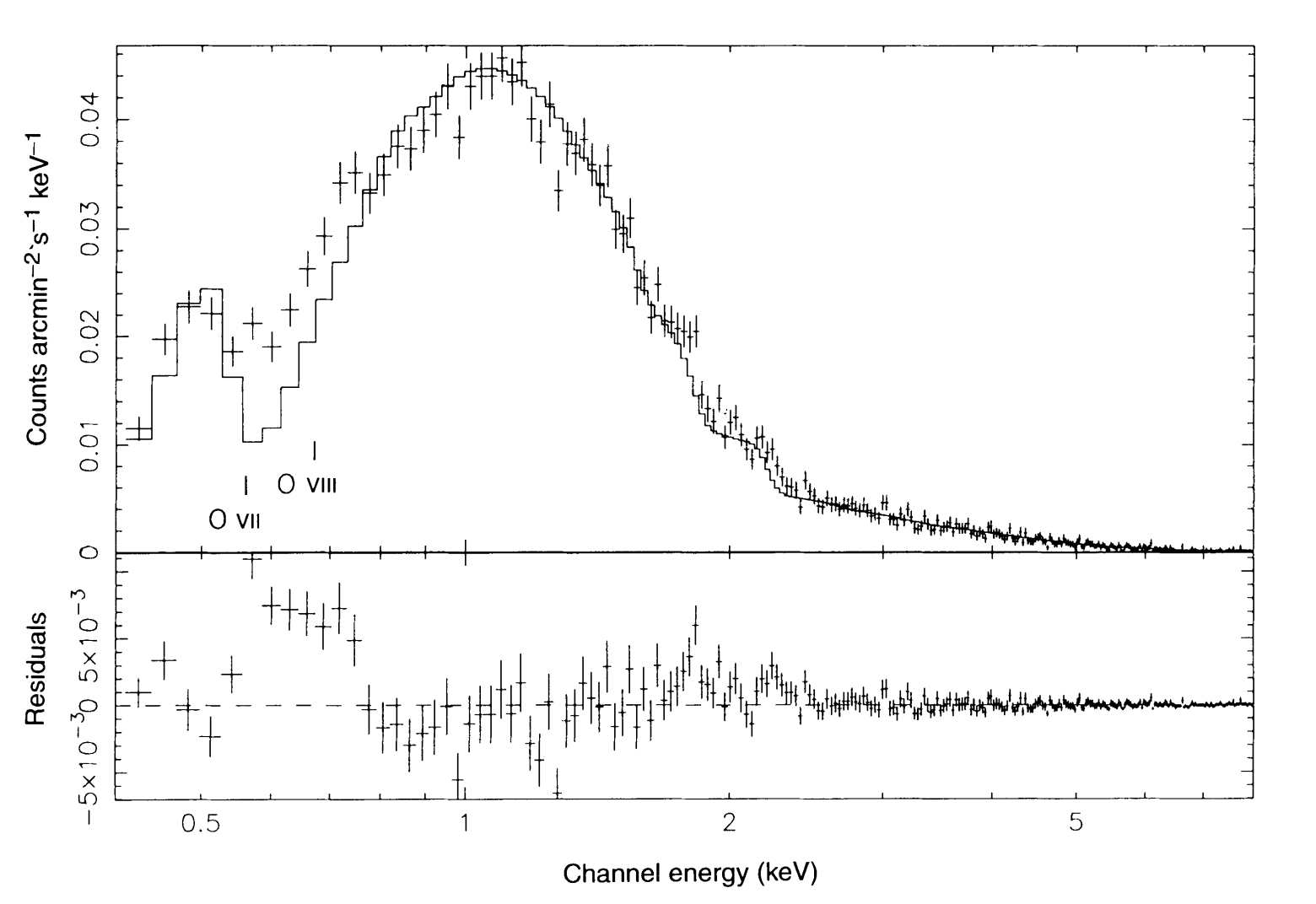ASCA Special Exhibit
SN 1006 – a source of cosmic rays
How do supernova remnants produce X-rays?

This false color composite picture of the bright supernova remnant SN1006 was taken with the ASCA CCD cameras. (Credit: Kayama et al, Nature (1995), 378:255)
The combination of imaging and spectroscopic capabilities makes ASCA particularly suitable for the study of supernova remnants, or SNRs for short. In general, most X-rays that SNRs give off come from hot gas. As the SNR shock wave goes through interstellar space, it heats up the gas it plows into. This hot gas gives off X-rays via processes collectively known as thermal emission.
In addition, a small amount of interstellar gas becomes trapped in the SNR shock and bounces back and forth across the shock, a process known as Fermi acceleration. The more times the electrons, protons, and ions from the gas bounce back and forth, the more energy they gain. Eventually, they become cosmic rays, which are subatomic particles – typically electrons and protons – that travel in space near the speed of light. The emission given off when the cosmic ray electrons interact with the magnetic field is called synchrotron radiation.
Synchrotron radiation from cosmic rays each with an energy of about a billion electron volts (1 GeV) is widely seen from the shells of SNRs by radio astronomers, but it had not been observed elsewhere in the electromagnetic spectrum until recently with ASCA.
ASCA observations of one particular SNR, the supernova of 1006 A.D. (SN 1006), was the first example of synchrotron radiation from cosmic rays with energies about 100 trillion electron volts (100 TeV) within a SNR's shell.

Spectrum of the bright supernova remnat SN1006 from ASCA. It shows an emission shape that is interpreted as synchrotron emission which could indicate that the nucleus is a site of cosmic ray production. (Credit: Kayama et al, Nature (1995), 378:255)
How do we know that we are seeing synchrotron emission? The spectrum from snchrotron emission looks different than thermal emission. The spectrum from thermal X-rays generally shows a characteristic set of lines, while synchrotron radiation forms continuum which has no emission lines. In addition, synchrotron X-rays from SNRs have always appeared in the center of SNRs, and are believed to be powered by the pulsar that was created in the supernova explosion. However, SN 1006 does not fit neatly into this picture, apparently showing extended emission of continuum X-rays beyond the center of the remnant. There had much debate on whether this was synchrotron radiation, a peculiar kind of thermal radiation, or something else.
ASCA observations solved this long-standing mystery through the discovery of the expected thermal emission lines from hot gas and the localization of the previously known featureless X-ray emission to the bright rims of the remnant. This was inconsistent with the competing scenarios.
Therefore, electrons must have been accelerated to very high energies in the SNR shock wave. This is the first observational link between particle acceleration at a SN shock front and high-energy cosmic rays within our galaxy.
In general, the rate at which cosmic rays are caught here at the Earth tells us what rate they are made within the Milky Way. The only thing that is both common enough and energetic enough to produce the majority of cosmic rays with energies up to 100 TeV are supernova explosions, but until these ASCA results, they had only been associated with synchrotron radiation from electrons with GeV energies.
On the other hand, there are other objects that are less common or have less energy than SNRs, but do clearly show X-ray synchrotron radiation (e.g. pulsars and active galactic nuclei). Therefore astronomers were in a quandary, "Do SNRs accelerate particles to higher energies, but we don't see it, or are the other alternatives more energetic or more plentiful than we had thought?"
This result solves this quandary, because ASCA had clearly shown that SNR's shock waves could accelerate particles all the way up to energies of at least 100 TeV.
Published: February 1998
Text Reviewed: September 2018


